Meeting artists in Ñamarín and Saraguro: Part 1 – The Weavers – Ñamarín, Ecuador
Yesterday Anner and I were talking about how often we are posting and it hit me that, even though blogging is an incredibly modern construct and emailing it out uses an incredibly modern medium, it feels almost like we’re writing a newspaper or magazine serial from years ago! Each day or couple of days or week or more on occasion, we’re adding another chapter in the serial. Ok, we’re certainly not on the level of Arthur Conan Doyle or Charles Dickens, but it’s kind of fun to think of ourselves following in the vein of the “greats”. We really appreciate all your comments and I want to say thank you for enjoying our posts and I promise we’ll do our best to keep you looking forward to the next installment!
That being said…the next installment! Aside from doing the homestay, one of the main reasons we went to Saraguro was the chance to meet indigenous artists – and meet them we did! (Thank you again for organizing everything, Lauro!) Our first morning, before heading to our homestay, Luiza, our indigenous guide for the day, and Abelina introduced us to the Ñamarín style of cleaning wool, pulling yarn, dye-ing it and weaving.
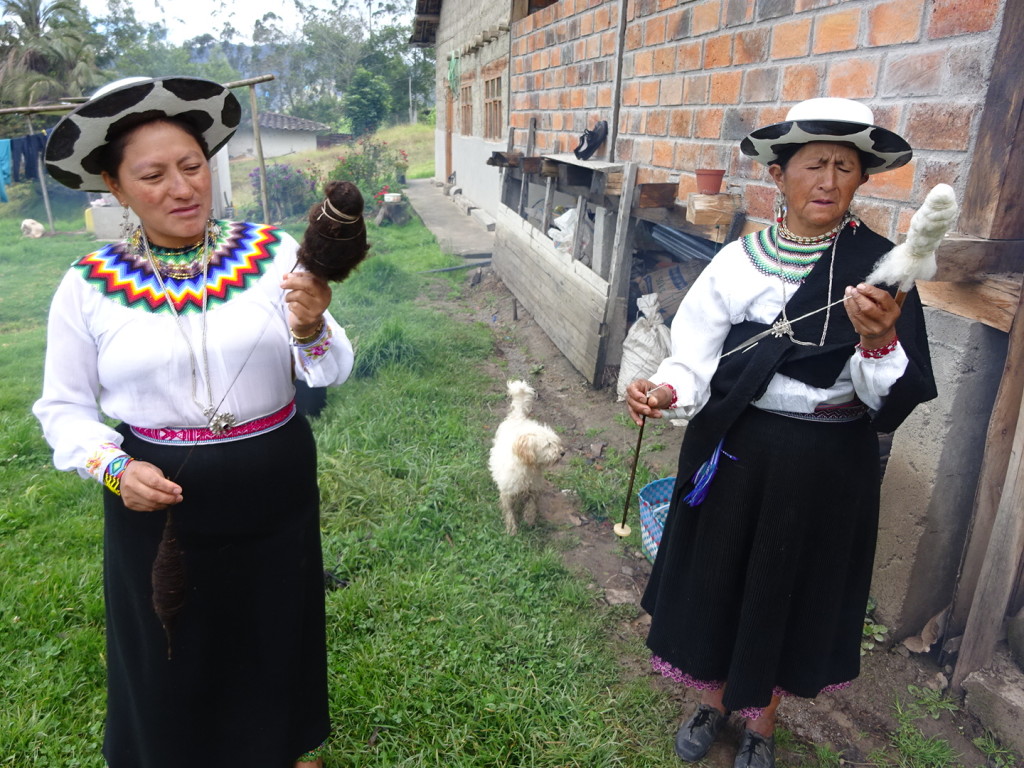
Luiza and Abellina pulling yarn from cleaned wool. Both white and dark wools are natural from different types of sheep.
We took a number of short videos of some of the steps in the process and Anner figured out how to combine them into one. (https://m.youtube.com/watch?v=qHgz9xbLQlo) In it you can see some of the winding process of the yarn as well as the all-natural dye-ing process. They use a variety of leaves and plants to keep the colors all natural. Those in the video were creating a green color, darker or lighter depending on how long it stays in the vat – 2hrs minimum.
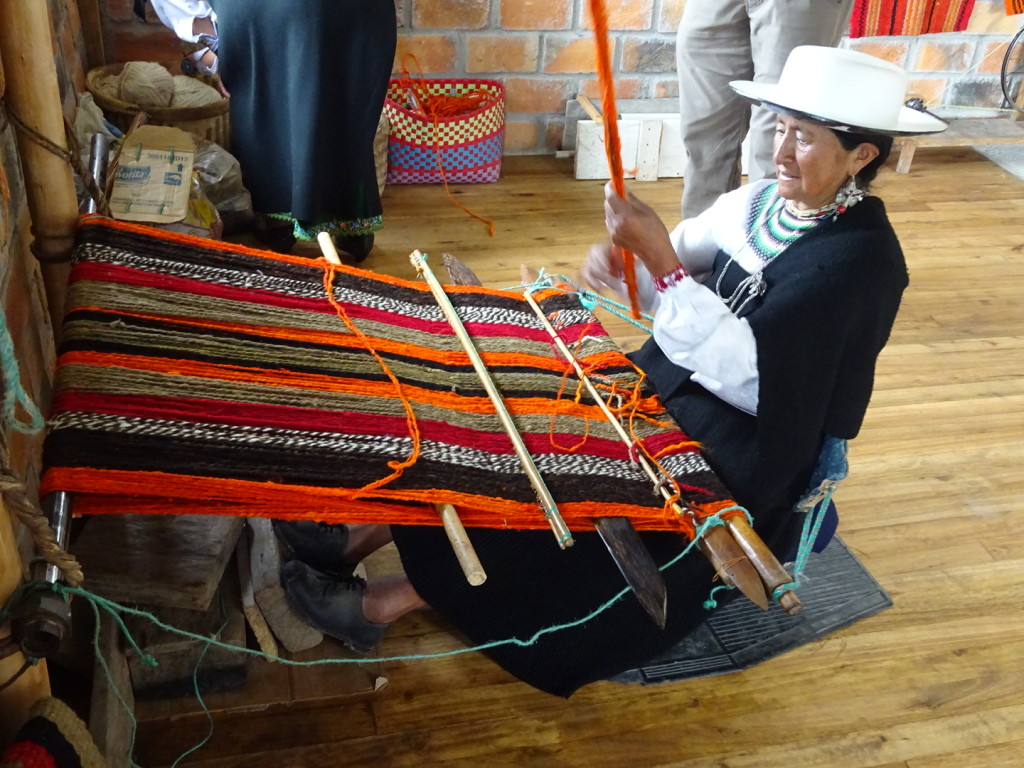
Abellina at the seated loom. She has a rough wood support behind her lower back which pulls the loom taut when she leans back. If you’re curious, this is being woven with both natural and synthetic dyed wools.
Seeing Luiza and Abellina in their traditional dress really made the experience that much more unique. In fact, let me describe that for a moment. As you can see in the photos, they wear a long, dark skirt (usually over another skirt), bright belt, a white shirt, wide beaded collar necklace, dark shawl which is held together with a silver stick pin/pendant called a “tupu” which doubles as a self defense weapon (more on that in a bit) and topped with these amazing hats! Truly unique! The hats really blew me away: they are, I believe, felt which has been painted or dipped in some sort of really hard resin/plaster to make them completely rigid. The underside of the brim looks like it’s spotted cowhide, but it’s actually just painted that way! There was some sort of short fur on the inside where it would go around the forehead, but it was still all pretty hard. And here’s the part that stunned me: each hat survives for generations! Luiza’s has gone through 4 generations in her family! Four! It has to get repainted from time to time, but that’s awesome!
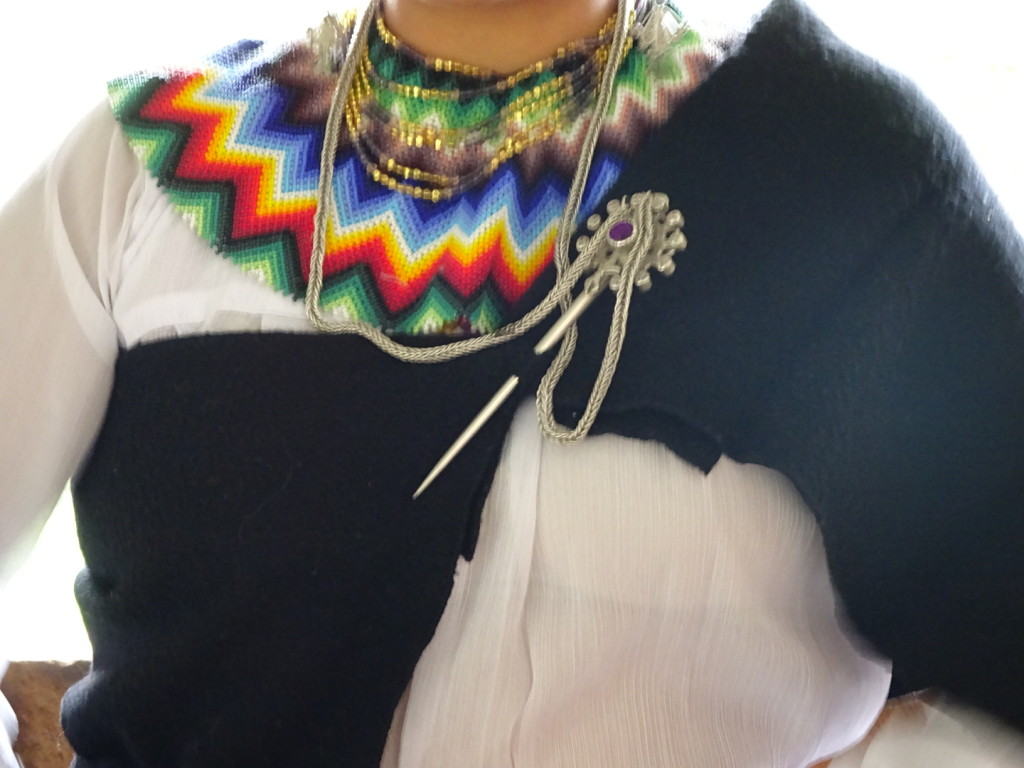
Here you can really see the beaded necklace, shawl and the amazing silver pin holding the shawl closed. Sorry it’s blurry!
After spending an hour or so with them, Luiza then walked us over to our homestay, which we posted about before. The day after our homestay, having had such an amazing experience, we asked Lauro to arrange for us to visit a couple more artists – a jeweler and a potter.
Thus ends tonights installment of ‘Meeting artists in Ñamarín and Saraguro’. Stay tuned for Part 2 in our serial where we meet The Jeweler of Saraguro!

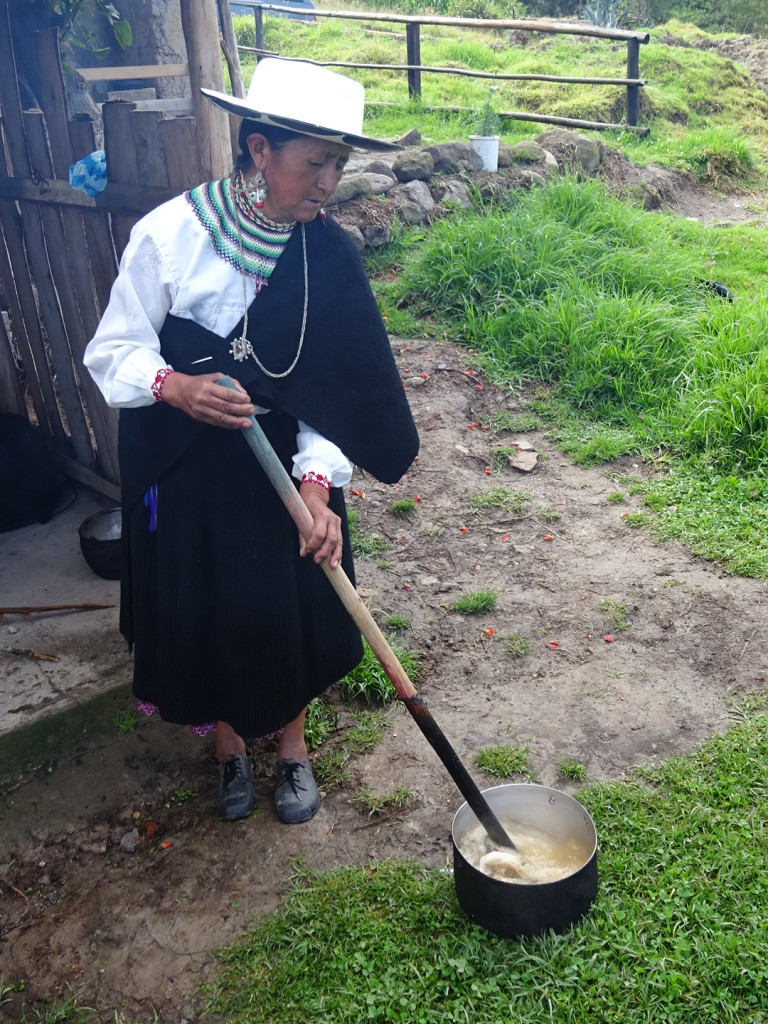
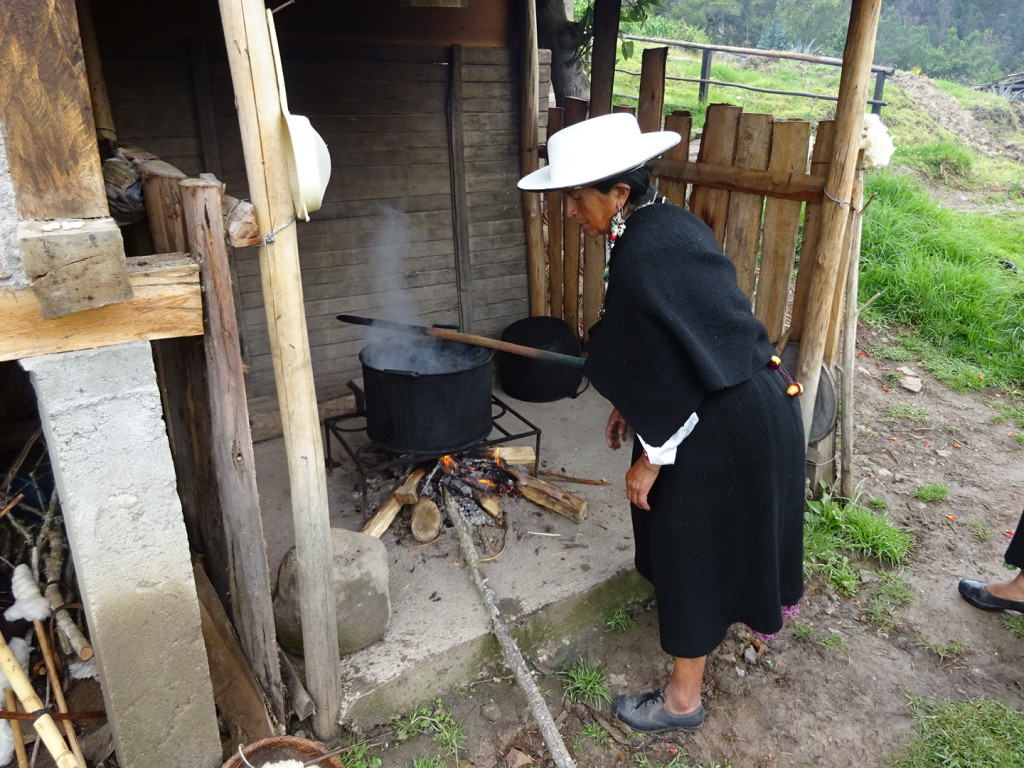
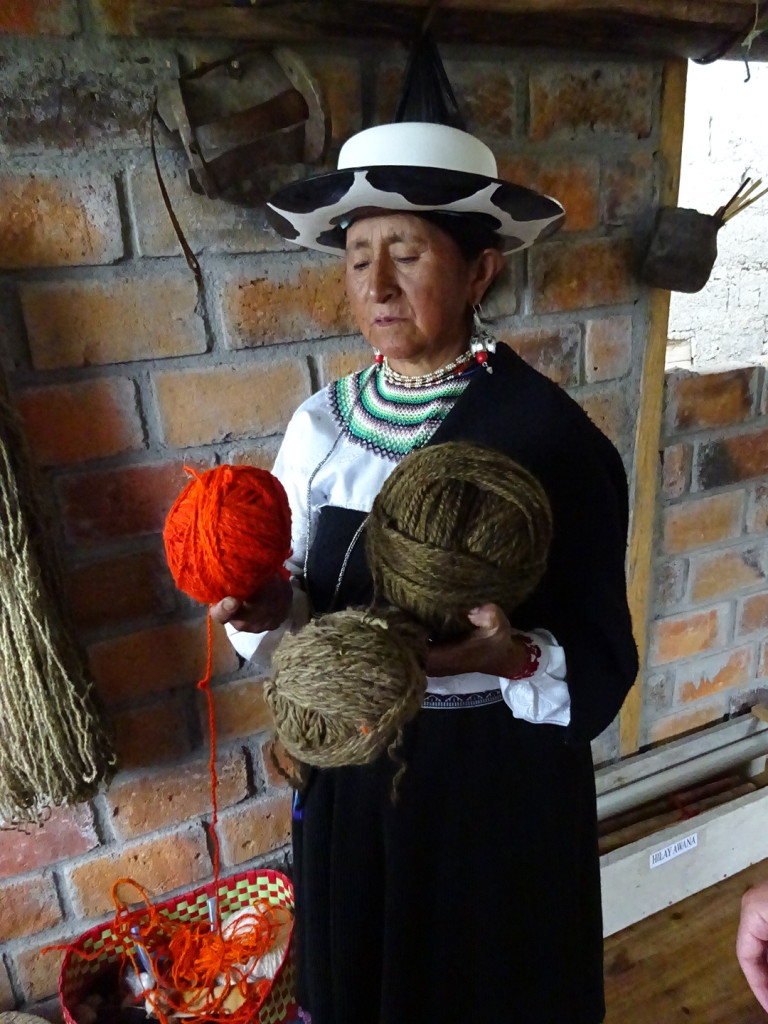
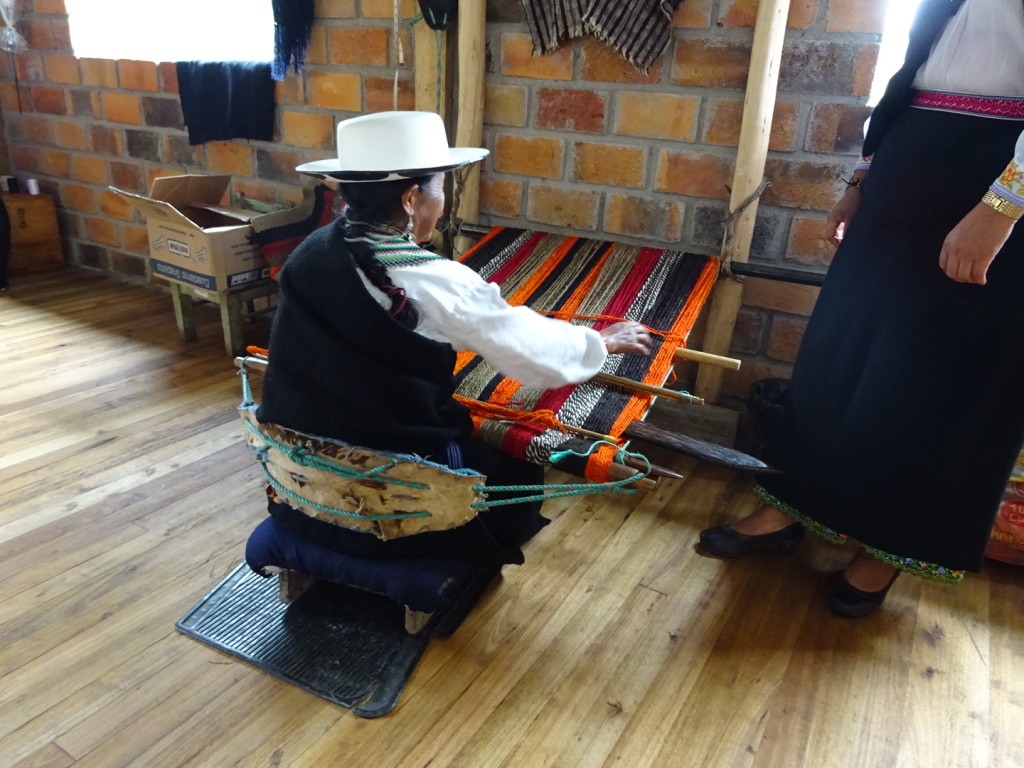
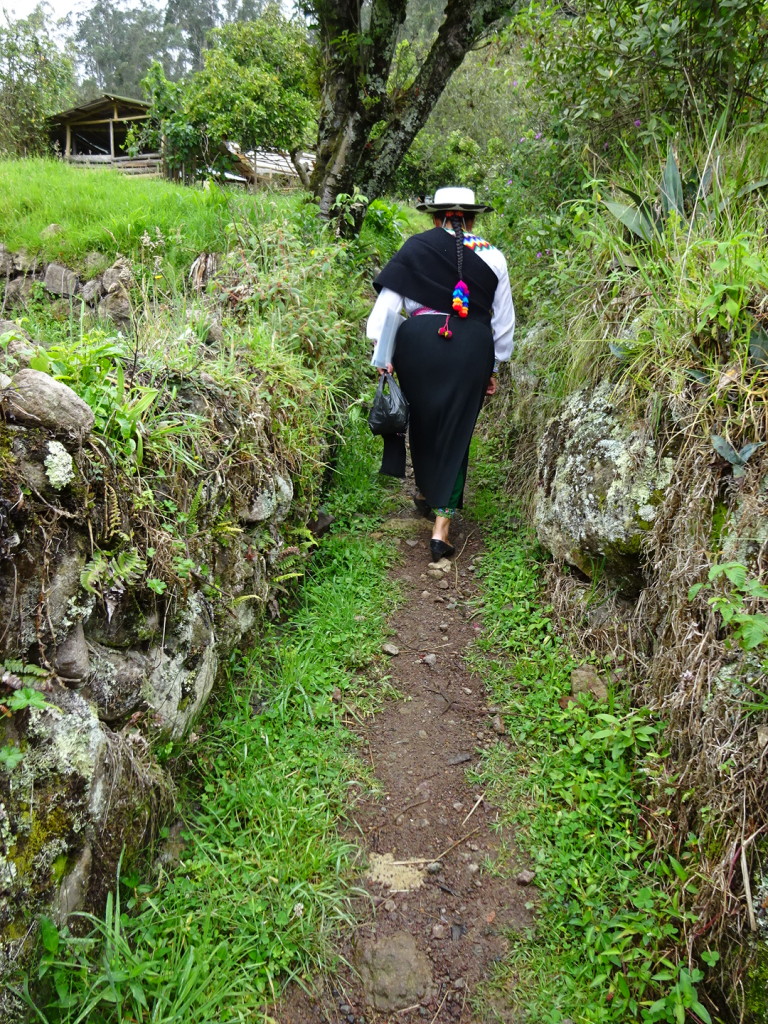
Look forward to seeing and reading your posts. Keep them coming.
Will do!!!
Loved this
More artists to come!
Wow! The craftsmanship is amazing! Thank you so much for describing the yarn making process and the history of the amazing hats!
Our pleasure! They really were impressive to see and hold in person – I had no idea the hats were so hard and durable. Did I mention that by being hard they also were waterproof? Very cool!
Fabulous. I wonder, what is the younger generation up to while these ladies are working at their trade? Those hats are something else. Are they specific to the locale or the family? The natural colors they dye the yarns are beautiful. Where do they sell the finished products?
Let’s see…there’s a younger generation still in school with lots of them going away to university – not sure if they return to the village afterwards or not. When the younger kids come home from school, they help with other housework.
The hats are specific to the folks in and around Saraguro, not a specific family. Mostly women wear them, though I did see one man.
The textiles seem to mostly be sold directly from the ladies’ houses! Not sure how people know to find them there, but they must.
I’m glad you post so often. It’s a great way to keep your memories and a delightful way to share your adventures. Thank you.
Pingback: No Map Required | Meeting artists in Ñamarín and Saraguro – The Jeweler
Pingback: No Map Required | Meeting artists in Ñamarín and Saraguro – The Potter
Muchisimas gracias, estimadas por haber visitado Saraguro y les recomiendo seguir visitando en las épocas de fiestas, por ejemplo en navidades y se sorprenderá mas.
We’d love to visit during the holidays, Luis! Perhaps next visit…